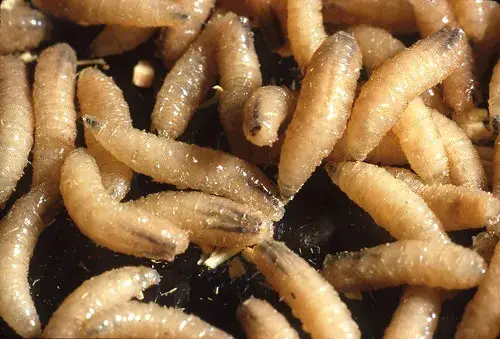A breakthrough has been achieved in efforts to eradicate the New World screwworm, a highly destructive insect threatening livestock on the US-Mexico border. Mexico has agreed to allow US planes carrying equipment necessary for eradication operations to land on its soil.
The decision comes after US Agriculture Secretary Brook Rollins sent a letter to her Mexican counterpart, Julio Antonio Berdegué Sacristán, demanding that restrictions on USDA aircraft be lifted. Rollins had threatened to halt beef imports from Mexico starting Wednesday if an agreement was not reached.
In a statement posted on X (formerly Twitter), Rollins hailed the breakthrough as “a huge win for our American ranchers!” She has also asked Mexico to waive customs duties on eradication equipment, which she claims is essential in preventing the spread of the pest north of the border.
The New World screwworm is a highly destructive fly larva that burrows into living animals’ flesh, causing serious damage and even death. The insect typically infests livestock, wildlife, pets, and birds, and can also infect humans, particularly those with open sores or wounds.
Mexico’s agreement to allow US planes to land comes as the screwworm outbreak in southern Mexico continues to spread. Rollins has emphasized that every day of delay in deploying sterile insect technique (SIT) operations represents a lost opportunity to contain the pest and prevent its spread.
The SIT method involves releasing large numbers of sterile male flies into affected areas, which mate with female insects but produce no offspring. This approach was used successfully in eradicating the screwworm from the US in 1966 and again in parts of the Florida Keys in 2016.
Texas Agriculture Commissioner Sid Miller expressed support for Rollins’ efforts, stating that the screwworm presents a “serious and urgent risk to Texas and American agriculture.” He warned that each day of delay gives the pest a stronger foothold, increasing the threat to livestock across the region.
Rollins aims to work with Mexican officials to push the screwworm south towards its “biological barrier” at the Darién Gap. The US Department of Agriculture has expressed confidence in their ability to eradicate the pest using SIT operations and other methods, but only if they are allowed access to necessary resources and territory.
With Mexico’s agreement now in place, efforts to contain the screwworm outbreak can move forward with renewed momentum.
Source: CW 39




